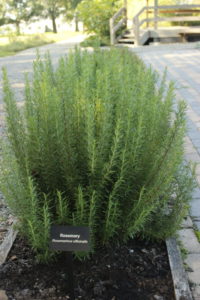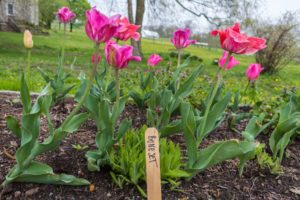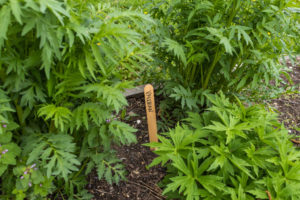Grow Your Own Medicinal Garden
Last updated on August 9th, 2022 at 11:51 am
Arnica montana, one of the most popular plants that’s been used for centuries for pain relief, grows readily in the French alps but is much harder to cultivate here in the states. However, there are some other plants that when used in homeopathic form are useful for a variety of painful conditions and are much easier to grown in your own garden!

Chamomilla officinalis (German chamomile)
Chamomile has been used for centuries. There are several types of chamomile, but German chamomile is the most common and the one used in homeopathy. Homeopathic Chamomilla is used primarily to help relieve teething symptoms. It’s also used to calm babies during a tantrum, where one cheek is redder than the other one and they’re calmed by being rocked. Chamomilla can also be used for people hypersensitive to pain.*

Cimicifuga racemose (Black cohosh)
Native Americans and early settlers used the Black cohosh plant’s roots and rhizomes to relieve a variety of conditions including rattlesnake bites. Today it’s commonly used to relieve hot flashes, depression and anxiety associated with menopause. Homeopathic Cimicifuga racemosa can help relieve pre-menstrual syndrome with migraines and cramps, menopausal symptoms such as hot flashes and sleeplessness, as well as neck and lower back pain.*

Eupatorium perfoliatum (Boneset)
Eupatorium perfoliatum is named after Mithridates Eupator of Pontus, a famous herbalist king who absorbed small doses of various poisons every day to avoid being poisoned. Boneset was used by Native Americans and early settlers to relieve a fever and colds, but also dengue, which is also called “breakbone fever” from the very painful aches it causes. Today homeopathic Eupatorium perfoliatum is used to help relieve intense bone pains associated with flu or other infections.*
Hypericum perforatum (St. John’s wort)
St. John’s wort flowers around St. John’s Day (June 24) and was traditionally hung above images of the saint to ward off evil. Homeopathic Hypericum perforatum is often called the “arnica of the nerves.” It helps relieve sharp pain following the nerve’s path, such as sciatica, toothaches or pain caused by damaged nerves.*

Rosmarinus officinalis (Rosemary)
The name comes from the Latin Rosmarinus, meaning “dew of the sea.” It was said that the goddess Venus was draped in rosemary when she emerged from the sea. The plant is also sometimes called anthos from the ancient Greek word meaning “flower.” Homeopathic Rosmarinus is used to help relieve indigestion accompanied with headaches, and also to relieve early, profuse and painful periods.*
Ruta graveolens (Rue)
Rue has a bad odor (graveolens means “heavy odor” in Latin). If the leaves come in contact with the skin and is exposed to the sun it can cause blisters. It is used as an insect, snake and cat repellent. Homeopathic Ruta graveolens is used to help relieve sprains, strained ligaments and tendons. It is also used to help relieve eye strain from artificial light.*
Valeriana officinalis (Garden valerian)
Valerian has been used since Greek times for its sedative, anxiolytic action. Low homeopathic dilutions of Valeriana officinalis is used to help relieve agitation and sleeplessness. In higher dilutions, it helps relieve both baby colic and sciatica improved by walking.*
These plants and others that are commonly found in homeopathic medicines can be viewed at the Boiron Medicinal Garden at Rodale Institute. Visit our webpage or watch our recent Facebook Live Garden Tour to learn more.
*Claims based on traditional homeopathic practice, not accepted medical evidence. Not FDA evaluated.
Media error: Format(s) not supported or source(s) not found
Download File: https://dev.boironusa.com/wp-content/uploads/2018/08/rodale_boiron_maggie_chamomile_seeding.mp4?_=1Photos and video courtesy of Rodale Institute.




